
Earlier this year Queensland Premier Annastacia Palaszczuk spent an hour wandering around the flat land bordering the Kogan Condamine Road, 300km inland from the Sunshine Coast.
She wanted to see what $600 million had bought.
One million solar panels, she was told, with a capacity to produce 400MW of clean energy. Or enough to power the equivalent of 235,000 homes.
When construction finished in April the Western Downs Green Energy Hub, which sits on about 1500ha south of Chinchilla, became the biggest solar farm in Australia.
South Australia’s Bungala Solar Farm had previously held the mantle with a capacity of 275 megawatts. That’s sufficient for about 113,000 homes.
About 80km south-east of there, Simec Energy Australia has plans to build the Cultana Solar Farm on 1100ha, which will generate up to 280 megawatts.
In NSW’s Southern Tablelands the Rye Park Wind Farm’s 66 200m-high Vestas wind turbines are due to be operational by mid-2024, generating up to 396 megawatts.
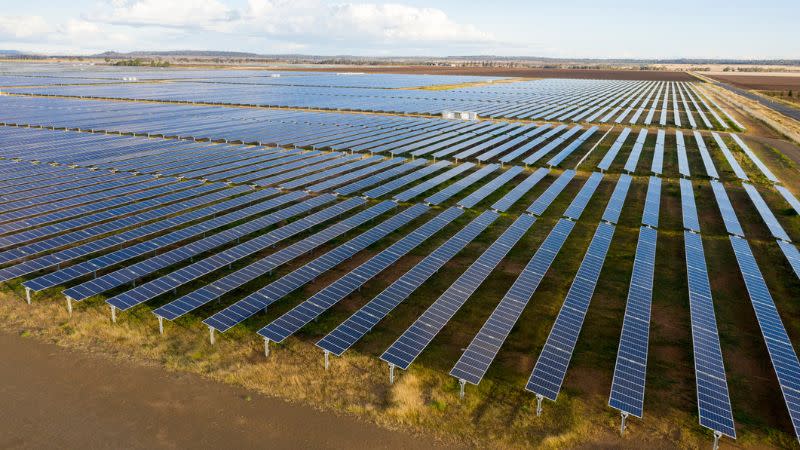
But the current NSW story is really about battery storage.
Akaysha Energy, a battery storage start-up backed by US investment managers BlackRock, will build and own the Waratah Super Battery. It’s a billion-dollar project by the NSW government’s EnergyCo, which will produce 850MW of active power and will be the biggest in the Southern Hemisphere. And among the biggest in the world.
But the mother-of-all renewable projects, the one to dwarf anything currently being attempted in Australia, is the Borumba pumped hydro project in south-east Queensland.
Queensland mines renewables seam
Palaszczuk’s government is committing $14.2 billion to fund the pumped hydro storage facility at Lake Borumba, near Imbil, 45 minutes south-west of Gympie.
Detailed studies show when completed it will generate 2000MW of electricity and will be able to deliver that output for 24 hours, continuously. It could power up to two million homes.
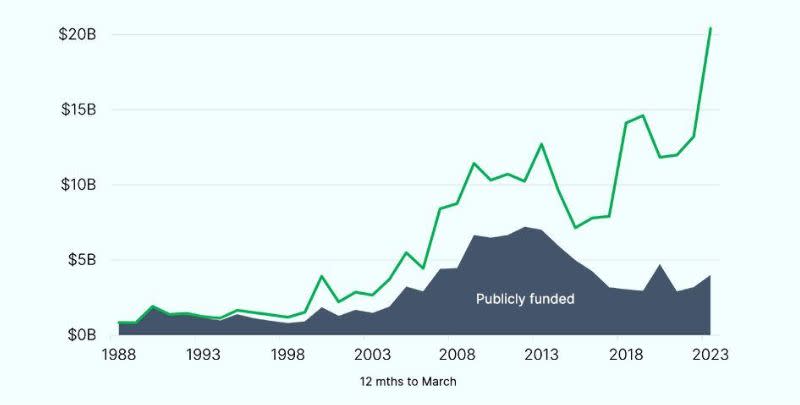
And, it’s one of two mega pumped hydro projects the government will build and own in its quest to shut down the state’s five coal-driven power stations by 2035.
In every state renewable energy projects are picking up pace, in what construction economist Robert Sobyra calls “utility scale.”
But the question remains, who will build this work and how will it be digested in a market that is already crying out for more labour?
“These projects will be an integral part of the energy system, along with all the solar farms, wind farms, and everything else,” says Sobyra, who is also head of policy for the Australian Constructors Association.
“And there is a bunch of big batteries being built around the place. There's quite a few of them as well, both under construction and in the pipeline.”
In fact, 2022 was a bumper year for the renewable energy industry. But there are more than a few sticking points in the build-out of the amibitous program of work according to Sobyra, who says the demands on material and labour are “enormous”.
Renewables projects hit $20bn
In March of this year, according to the Australian Bureau of Statistics, the total value of work commenced on renewable projects topped $20 billion for the first time.
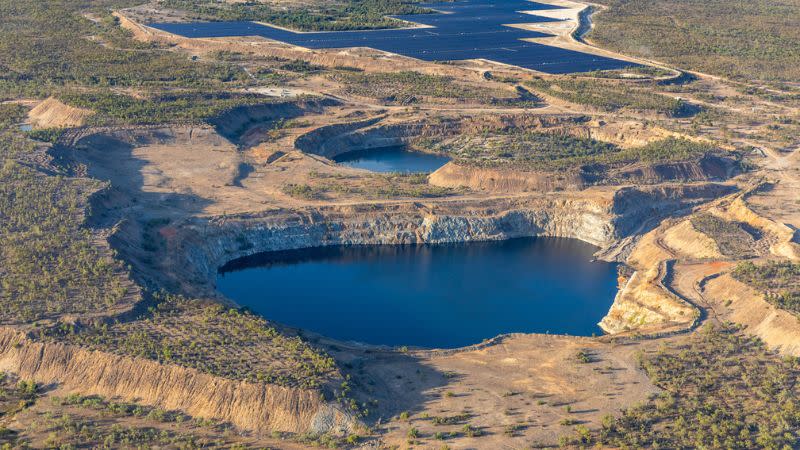
Sobyra says 80 per cent of that investment is private sector money.
“So this year we saw that investment beginning to show up in project commencements, which absolutely rocketed in the March quarter,” he says.
“We did about $6 billion in project commitments for electricity generation storage. And that's more than double what we would normally see in recent years.”
‘Lack of leadership’ on critical delivery issues
Impressive as those figures sound, data released this week by the Clean Energy Council show financial commitments to new wind and solar projects have hit record lows in the second quarter, according to the council’s Renewable Projects Quarterly Report.
But that’s not enough, says the council’s chief executive Kane Thornton.
“While there is now strong political support for the clean energy transition, there remains a raft of barriers as a result of the historic lack of leadership, planning and foresight over the prior decade,” Thornton said in the report.
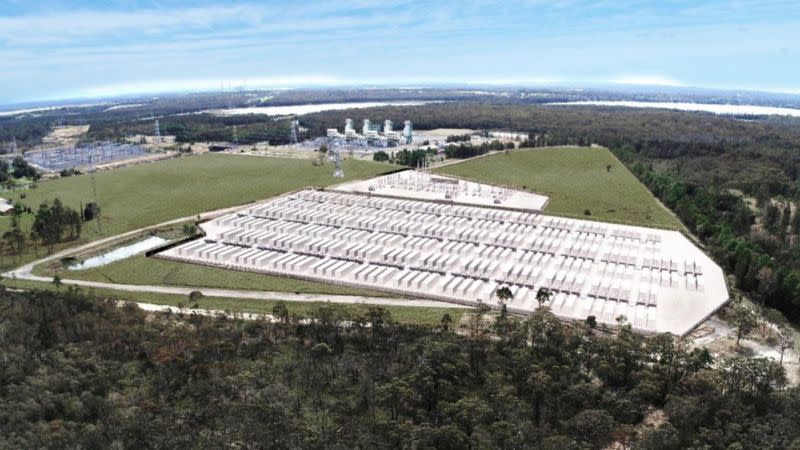
“These challenges make final investment decisions for large scale renewables projects more difficult, and include under-investment in transmission, grid connection challenges, inconsistent planning policies, constraints in supply chains and workforce as Australia competes with global leaders that are all accelerating their demand for renewable energy.”
Sobyra agrees.
“All the experts seem to agree we're not going fast enough to be able to reach the government targets,” he says. “We’ve got to move faster.”
He acknowledges that will be difficult.
“The structure of this market is you'll have these proponents who identify a project and acquire some land, design a solar or wind farm, scope it up, go out to financiers and try to get that funded.
“But the critical thing is they then have to go to an energy buyer or a utility company to get a power purchase agreement in place with them.
“And until you've aligned those three stars, you can't get your project to construction.”
The challenges don’t end there.
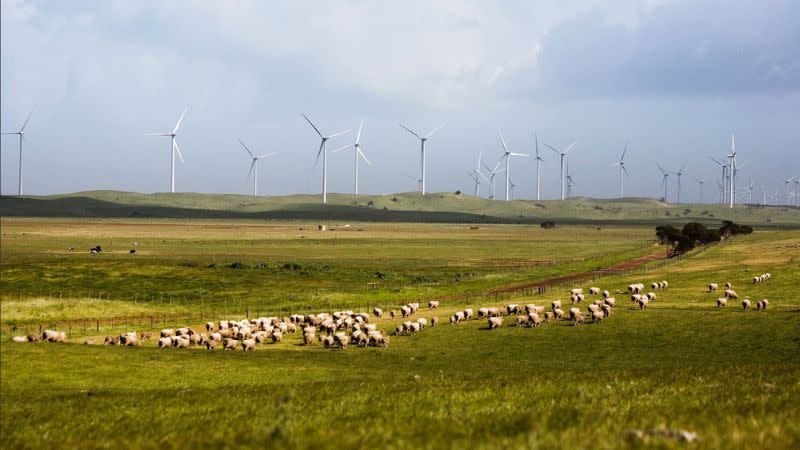
Last year the Palaszczuk government unveiled its $62-billion, 10-year energy and jobs plan, which includes renewable energy targets of 70 per cent by 2032 and 80 per cent by 2035.
However, modelling by the CSIRO shows that for Queensland to meet those renewable energy aspirations, it will need up to a 50-fold increase in renewable electricity assets by 2050.
The task is substantial.
Purely a numbers game
Research commissioned by Sobyra shows Queensland’s immediate labour needs are a modest 4600 construction workers for renewable projects already under way or committed to 2025.
However about 27,000 construction jobs will be needed for the state’s renewables build-out between 2021 and 2050. Around half of those will be absorbed by the hydrogen economy, in a state already struggling to find enough construction labour.
“The problem is not the quality of labour, it's the quantity of labour,” says Sobyra.
“We don't need to train people any differently, we have the skill sets and everything already, it's just the number.
“We just need heaps more linesmen and heaps more concreters, not to mention all the equipment that goes with that, like earthmoving equipment, the cranes, just the sheer number of inputs that are needed in plant, material and labour are enormous.”
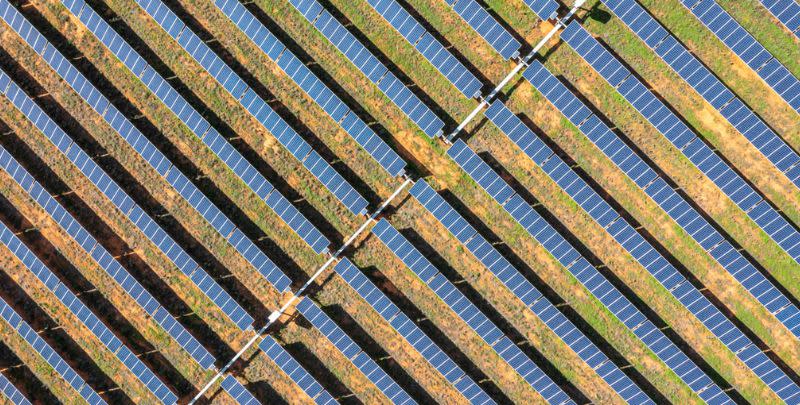
When both stages of Victoria’s Golden Plains Wind Farm are completed the $3-billion development will provide enough power for more than 765,000 homes. To do that it has planning approval for up 228 230m-high wind turbines.
Like many Australian wind projects, those will likely be made by Vestas, in Denmark.
“We're obviously not manufacturing the turbines and everything here in Australia,” says Sobyra. “We’ve got to import that stuff.
“And increasingly the industry is concerned we're going to be way down the list for these manufacturers to supply us, because the US and Europe are both going very hard at this. And are so far ahead of us.”
When US president Joe Biden signed the Inflation Reduction Act into law 12 months ago, he opened an energy stimulus package, which by some estimates could be as much as $US1 trillion, fast-tracking demand for renewables technology and a huge new market for manufacturers.
Thornton says overseas markets will absort materials while Australian projects would become “less attractive” for manufacturers.
Coordinated approach needed
Two weeks ago, the Australian Constructor’s Association—the national body representing Australia’s construction, infrastructure and services companies—hosted an industry leaders forum for senior bureaucrats in public works, energy and environment and some of the biggest infrastructure companies.
It was the first forum in which they’d spoken new energy, and the challenges they all faced.
“There was a consensus this is a massive mountain we need to climb,” Sobyra said.
“And we need to climb it together, and think more systematically about it…how do we join up all the states and territories? How do we bring the private sector developers into the conversation and coordinate this much better?
“The normal stock-standard way you would procure a private development, say a building or road, is probably not going to be quick enough to reach our targets. We need to think more innovatively about how we bottle up these projects, package them and bring them to market so we can really accelerate the delivery.”
But frankly, the construction economist said, the conversation has only just started.
You are currently experiencing The Urban Developer Plus (TUD+), our premium membership for property professionals. Click here to learn more.















